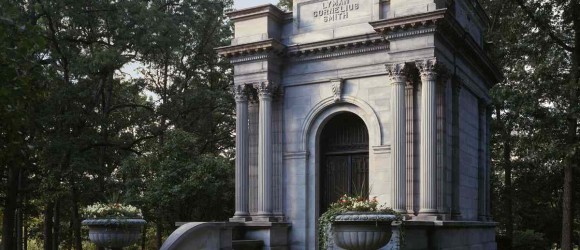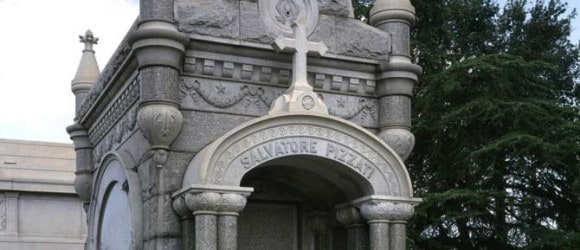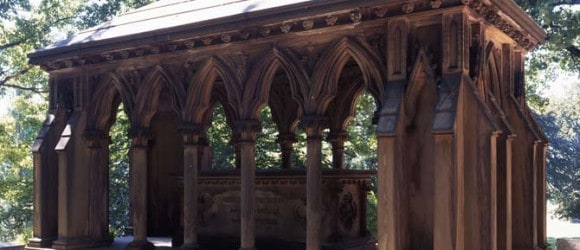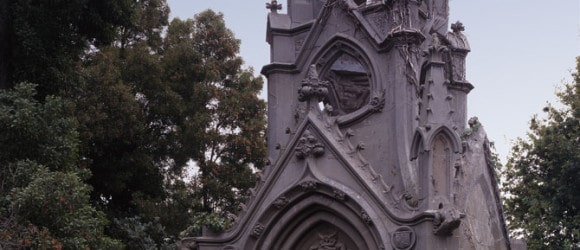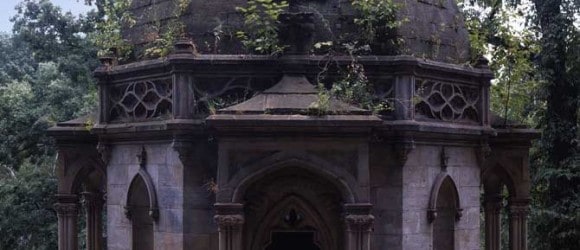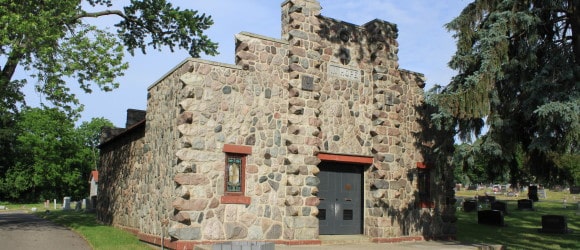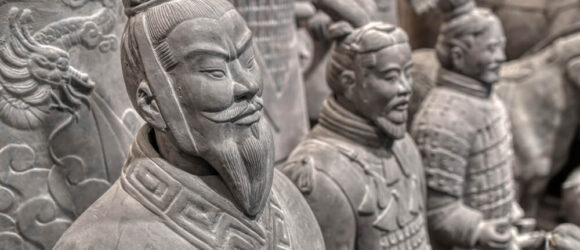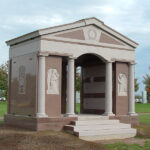Spring Grove Cemetery and Arboretum Mausoleums
Spring Grove Cemetery and Arboretum in Cincinnati, Ohio is one of the nation’s finest examples of rural garden cemeteries dating to the mid-19th century. Spanning 733 acres, of which approximately 450 are currently developed, Spring Grove is the second largest cemetery in the United States. In 2007, Spring Grove was designated a National Historic Landmark. Originally “Spring Grove Cemetery,” the governing association changed its name to “Spring Grove Cemetery and Arboretum” in 1987 to recognize its extensive collection of native and exotic trees.
Read More»Oakwood Cemetery Mausoleums, Syracuse, New York
Oakwood Cemetery in Syracuse, New York is a 160-acre historic cemetery dating back to 1859. The cemetery was added to the National Register of Historic Places in 1991. Designed by Howard Daniels in 1859, Oakwood Cemetery is an important part of the history of Syracuse, with a number of noteworthy interments, as well as some notable private and family mausoleums.
Read More»Mount Auburn Cemetery Mausoleums, Cambridge, MA
In the 180 years since its consecration, Mount Auburn Cemetery has become more than a cemetery; it’s also a National Historic Landmark, a world-class arboretum and botanical garden, a habitat for urban wildlife, and a veritable museum of art and architecture. It’s a destination site, a historic landmark, an active burial ground, and an important reflection of changing culture and artistic taste.
Read More»Metairie Cemetery Mausoleums, New Orleans, Louisiana
Metairie Cemetery is home to the largest collection of marble tombs and funeral statuary in historic New Orleans. The cemetery is located within the New Orleans city limits, next to the area that was formerly Bayou Metairie. Metairie Cemetery was entered into the National Register of Historic Places in 1991, and is the burial place of many famous people from the region.
Read More»Green-Wood Cemetery Mausoleums, Brooklyn, New York
One of America’s earliest rural garden cemeteries, Green-Wood Cemetery in Brooklyn, New York is a significant historical site, in addition to being an active cemetery. Founded in 1838, Green-Wood Cemetery today spans more than 475 acres and is the final resting place for over 560,000 individuals – and has one of the largest collections of 19th and 20th century statuary and mausoleums. Green-Wood Cemetery is a Revolutionary War historic site, and was designated a National Historic Landmark in 2006.
Read More»Cypress Lawn Memorial Park Mausoleums, Colma, California
Cypress Lawn Memorial Park, known as the “City of the Silent,” is an important cemetery in Colma, California. Cypress Lawn Memorial Park, founded by Hamden Holmes Noble in 1892, has served many prominent citizens from the greater San Francisco area.
History of Cypress Lawn Memorial Park
Cypress Lawn Memorial Park was founded on an idea based on the failure of another prominent cemetery in the San Francisco area – Laurel Hill. In the 1860s, Laurel Hill was a premier cemetery in San Francisco, with beautiful trees and gardens and wide streets. With no trust funds or endowment to maintain the gardens and streets, however, Laurel Hill Cemetery fell into disrepair by the 1890s, and was considered a public disgrace. Hamden Holmes Noble, upon taking a carriage ride through Laurel Hill in the early 1890s, decided to start a new cemetery – one that would surpass Laurel Hill in beauty, and would be built on an endowment to ensure long-term care of the property.
Read More»Allegheny Cemetery Mausoleums, Pittsburgh, PA
Allegheny Cemetery, the sixth oldest rural cemetery in America, memorializes more than 124,000 souls. Some of the oldest graves are from the French and Indian War, and have been moved here from their former burial site at the Trinity Cathedral in downtown Pittsburgh. Allegheny Cemetery is the final resting place of many of Pittsburgh’s notables. This picturesque cemetery is a member of the National Register of Historic Places.
Read More»Mausoleum in Saline, Michigan Celebrates 100th Anniversary
The Oakwood Cemetery mausoleum, built a century ago, is celebrating the milestone with a special ceremony last Sunday, according to the Saline Reporter. The structure has become one of Saline, Michigan’s historic landmarks and houses the remains of dozens of individuals interred throughout the last century.
The mausoleum dates back to 1913, when the Saline Observer reported that J.W. Flowers of Toledo, Ohio had purchased land at the Oakwood Cemetery in order to construct a brand new mausoleum. The cemetery handled the mausoleum design and construction, while Flowers was tasked with the sale of available mausoleum chambers. The mausoleum is comprised of 88 burial chambers, with a South Wall that holds 44 families and a North Wall that holds another 23 families. A number of local residents are interred within the mausoleum with their spouses or family members, the oldest of whom, John Hull, was born in 1842.
Read More»Rome’s Architectural Marvel: The Transformation of Hadrian’s Mausoleum Through History
Rome, a city renowned for its architectural grandeur, houses many iconic structures that stand as testaments to its rich history. Among these, Hadrian’s Mausoleum, the Castel Sant’Angelo, holds a unique place. Initially built as the final resting place for Emperor Hadrian, this monumental structure has undergone a remarkable transformation over the centuries, serving as a fortress, papal residence, and even a prison. This blog explores the evolution of Hadrian’s Mausoleum, highlighting its architectural ingenuity and historical significance, as well as its notable angel statue sitting atop the structure.
Read More»Exploring China’s Sacred Burial Sites: From Terra Cotta Warriors to Imperial Mausoleums
China, a land rich in history and culture, holds a deep reverence for its ancestors, and this respect is vividly displayed in its sacred burial sites and cultural relics. From the famed Terra Cotta Warriors of Xi’an to the elaborate imperial tombs scattered across the country, China’s burial sites are a fascinating intersection of art, history, and spirituality. These Chinese tombs and mausoleums offer a glimpse into the country’s dynastic past, providing insight into the lives, beliefs, and traditions of the Chinese people through the ages.
Read More»